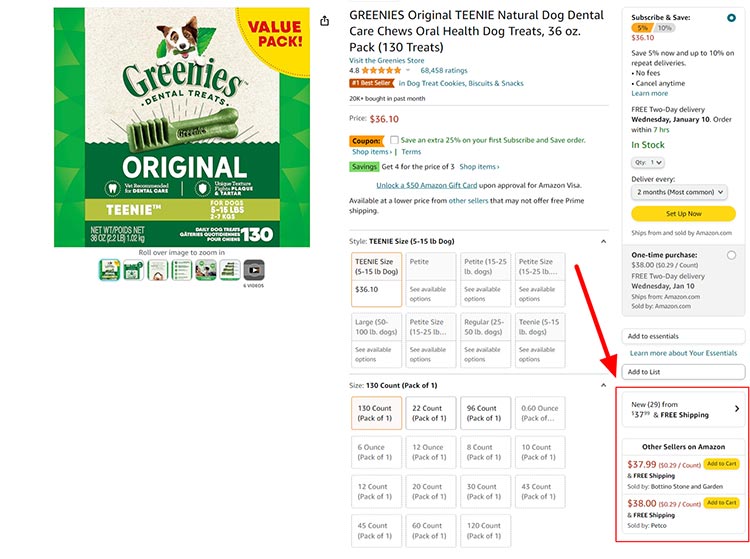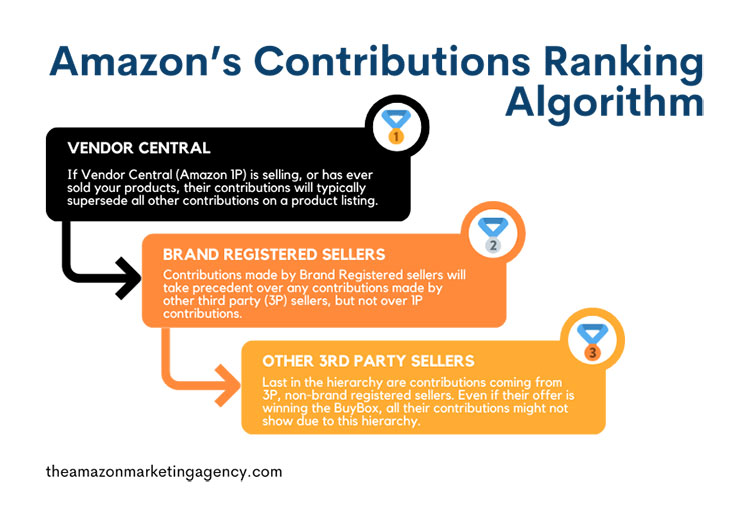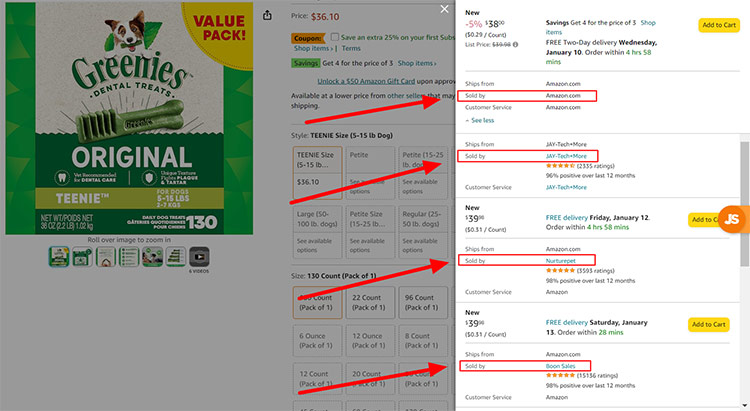In the vast realm of Amazon’s e-commerce marketing landscape, the intricacies of its catalog system play a pivotal role in how products are presented and sold. Let’s delve into the fascinating journey a product takes, from its unique identifier to the customer’s view on the product detail page.
Unique Identifiers and ASINs
Products enter the Amazon universe with a unique identifier—UPC, EAN, JAN, or ISBN, known as the GTIN (Global Trade Item Number). To create a product listing on Amazon, one of these unique identifiers must be supplied and will be immediately checked for verification with GS1. If the Brand Name provided on the product listing request, and the Brand Name on the GS1 record for the GTIN do not match, a product listing will not be created. Once this identifier is verified, Amazon creates a “product detail page” and assigns it an ASIN (Amazon Standard Identification Number).
This detail page is what a customer sees when browsing Amazon, and the ASIN becomes the primary identifier for this product on Amazon, representing the product across the various marketplaces on the platform from Amazon.com to Amazon.ca, Amazon.com.mx, and beyond. Only Brand Registered sellers can create product listings without a GTIN with Product Identification Exemption, but even those products will be assigned a single ASIN.
Single Product Page, Multiple Sellers
Here’s the catch: only one product page exists for each unique identifier. Sellers don’t create new pages when they want to sell their items. If the item already exists within the Amazon catalog, sellers instead add an “offer” for an existing product. This prevents the same product from being represented by multiple product detail pages, ensuring a consolidated view for customers, and preventing the clutter of multiple pages for the same product.

The Conglomeration on the Product Detail Page
What is displayed to a customer on the product detail page is a synthesis of contributions from all sellers offering that product. This includes the Item Name (title), Bullet Points (key product features), Images, Product Description, and all manner of attributes describing the product. Whether a seller is currently the Featured Offer (previously known as the Buy Box winner) or not, their offer contributes to the overall customer experience. It’s crucial to grasp that the displayed information amalgamates various sellers’ input.
Contributions Ranking
Contributions on the product detail page undergo a ranking hierarchy. Although the general rule is that the contributions of the Featured Offer (Buy Box) winner take precedence, in practice it is a bit more complicated.
First, any contributions made by the Brand Registered sellers will supersede any other contributions made by a 3rd party seller (understand the difference between 1P and 3P), even if they do not have an active offer for the product and are not winning the Buy Box.
Furthermore, any contributions made from Vendor Central (1P) or from Amazon’s “Retail” team will supersede even a Brand Registered seller’s contributions. This is very important to remember if your products were previously, or still are, being offered by Amazon 1P.

Additionally, contributions from any seller may be suppressed from the detail page if they do not follow Amazon’s ever-changing guidelines and best practices. Understanding these nuances is vital for sellers attempting to ensure their brands and products are well represented on the Amazon marketplace.
The Buy Box: Where Offers Compete
The pinnacle for sellers is the coveted Buy Box. Here, various offers for the same product vie for visibility. On every customer visit to a product listing, Amazon’s algorithm dynamically evaluates factors like landed price (price + shipping cost), delivery speed, and seller rating to determine which offer wins the buy box, and becomes the Featured Offer. The Buy Box winner is the seller who will be awarded with the sale of this item, if the customer selects “Buy Now” or “Add to Cart”.

Customers do have the option to select a specific seller when making their purchases by selecting “See More Buying Options” or selecting the button to expand the Offers list. However, it is extremely rare that a customer individually selects an offer, meaning that winning the Buy Box is critical to making sales on Amazon. Improving your chances of winning the Buy Box is a whole discussion however.
Why It Matters
For sellers, comprehending this intricate dance is imperative. Behind the scenes, your contributions shape the customer experience. Yet, for most customers, these mechanisms remain concealed, underscoring the complexity that makes Amazon the seamless shopping experience it is.
If you need help listing, optimizing, or winning the Buy Box for your items, contact us today to learn more about how Accelerazon can help you reach your Amazon goals.

